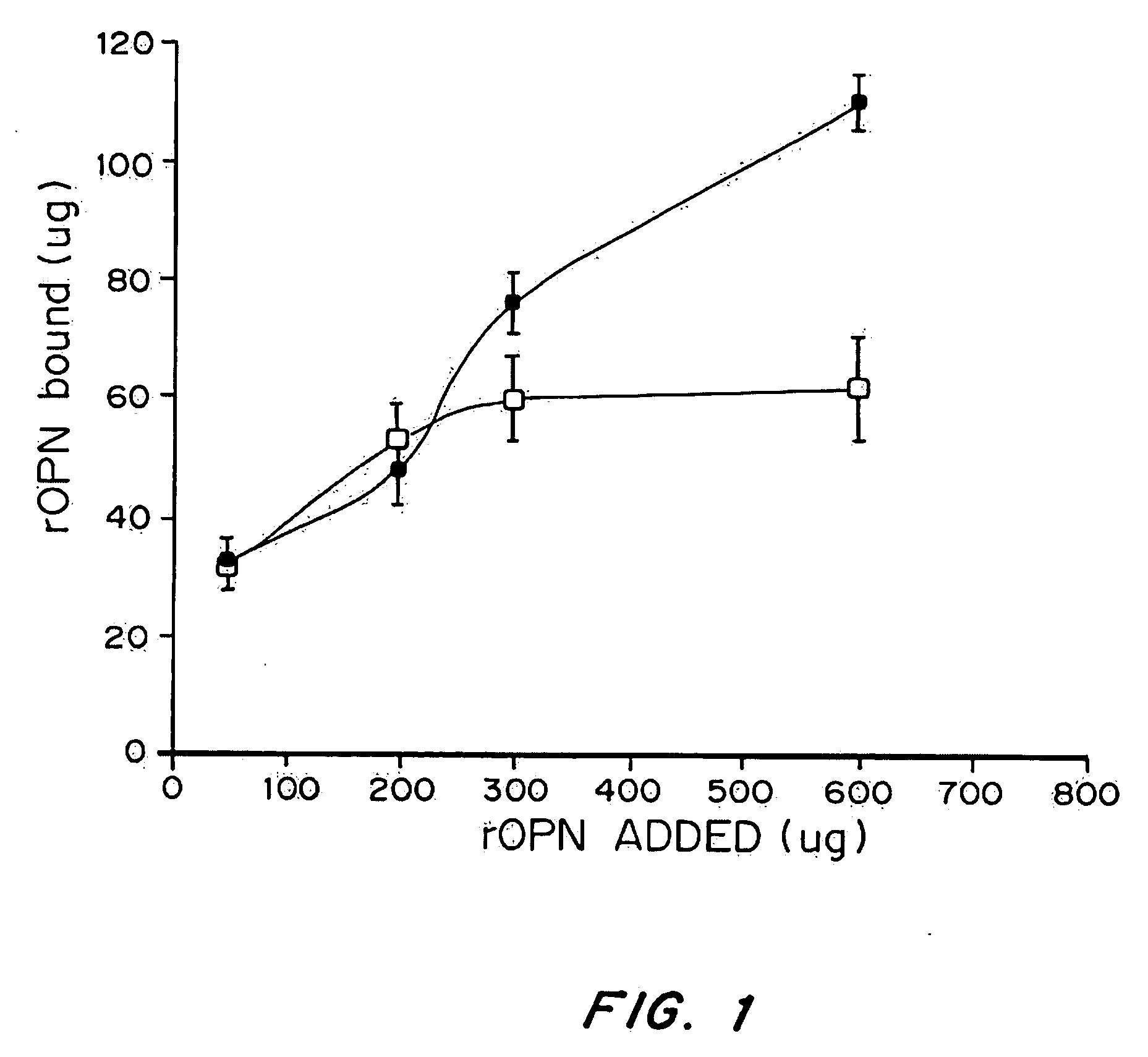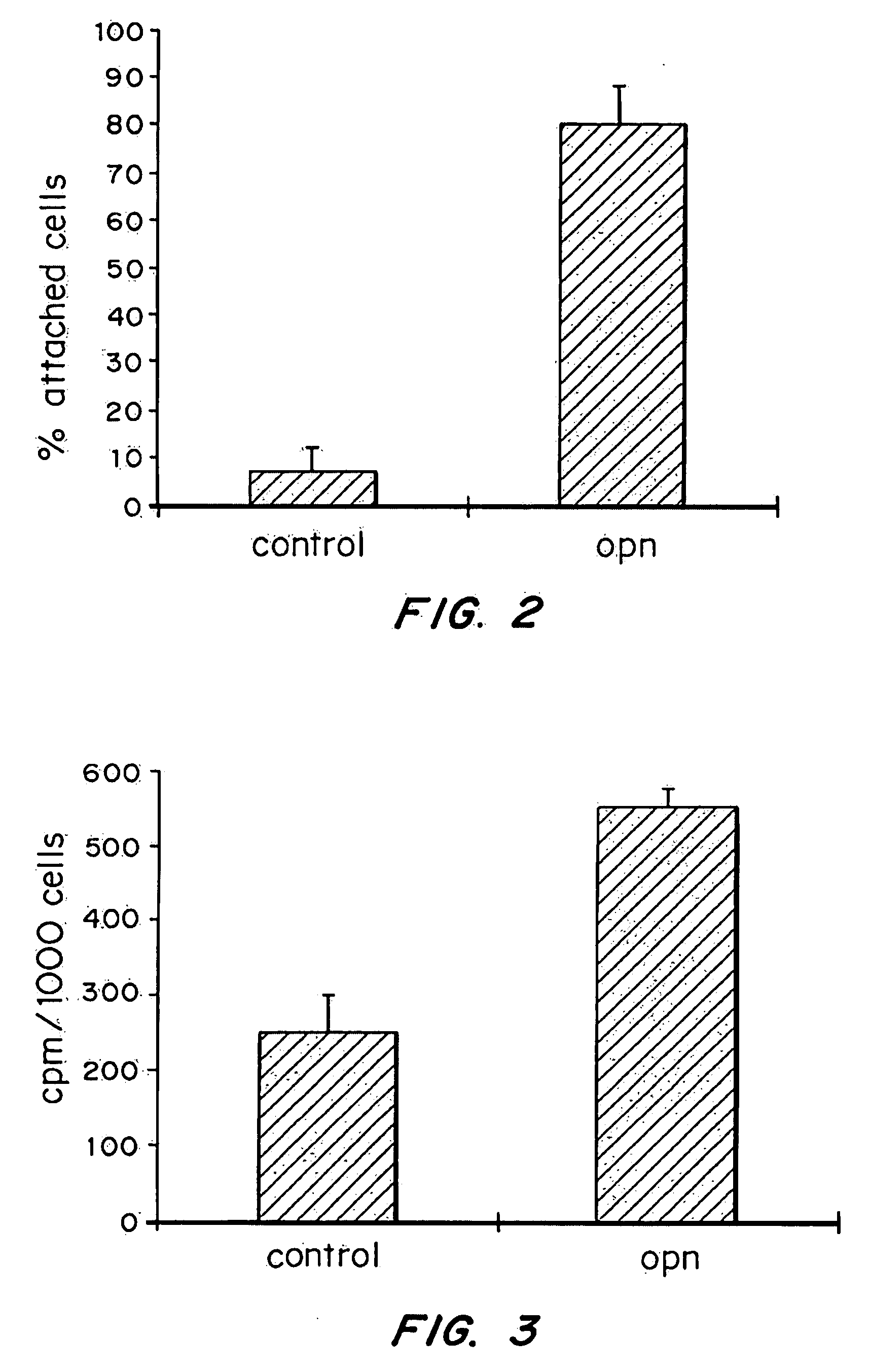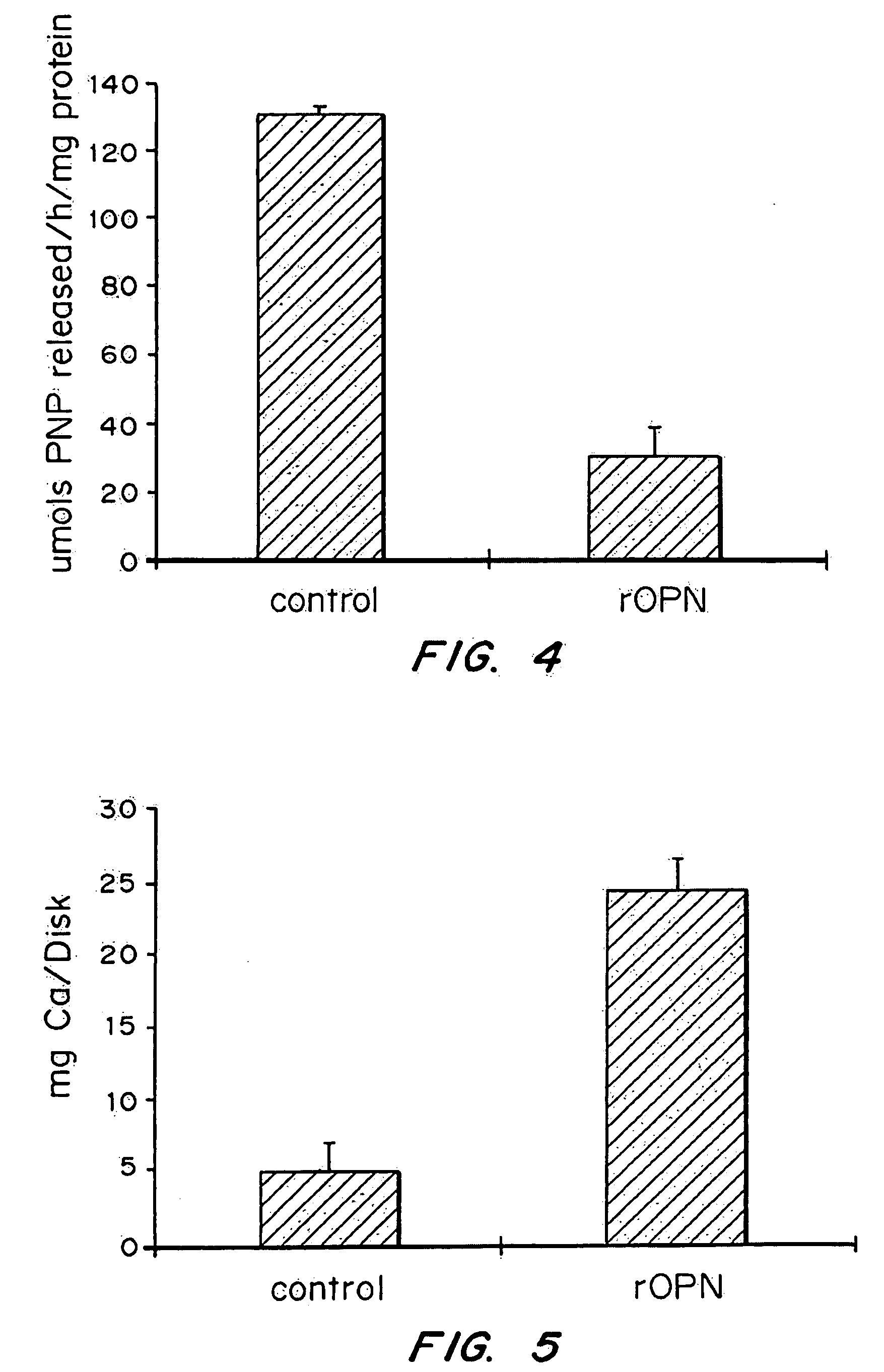Osteopontin-coated surfaces and methods of use
a technology of osteopontin and coating, applied in the field of osteopontin coating surfaces and methods of use, can solve the problems of not being able to make good bone implants, material surfaces that cannot bind macromolecules supporting osteoblast function, etc., and achieves enhanced osseointegration and bone apposition, increased implant placement indications, and improved osseointegration and osseointegration rate
- Summary
- Abstract
- Description
- Claims
- Application Information
AI Technical Summary
Benefits of technology
Problems solved by technology
Method used
Image
Examples
example 1
Coating of Implants
[0126] Titanium, plastic, glass and chromocobalt (CrCo) surfaces were coated with human recombinant OPN. Attachment and proliferation of human osteoblasts by means of matrix formation markers was evaluated using uncoated surfaces as a control. Also the amount of adhesion protein that can be coated to these surface was investigated.
[0127] The human recombinant phosphorylated form of osteopontin (rhOpn) was used as an adhesion molecule. This form of osteopontin migrates on 10% SD S-gels with an apparent molecular weight of 78 Kd, making it easy to differentiate from osteopontin secreted by osteoblasts which migrates in the same gels with an apparent molecular weight of 58 Kd.
[0128] The experiments outlined below investigate the expression and mineralization of extra cellular matrix components in human osteoblasts cultured on titanium disks, plastic, glass and chromocobalt surfaces coated with recombinant osteopontin. The adhesion molecule rhOPN used as a coating ...
example 2
Effect of Ca++ Ions on the Binding of Osteopontin to Ti Disks
[0142] Increasing concentration of 35S-labeled OPN (60, 200, 400, 600 ug) were incubated with titanium disks either with (▪) or without () CaCl2 at 4° C. After 24 h the unbound protein was removed and the Ti disks were washed with PBS. Bound OPN was extracted from the disks with scintilation fluid and counted. Each experiment was done in triplicates and reported as mean±SEM.
[0143] To investigate whether exogenously added Ca++ had any effect on the binding of rhOPN to Ti, the binding of rhOPN to Ti disks was measured with and without added CaCl2. The results, presented in FIG. 1, demonstrate that in the absence of added CaCl2 the Ti disks saturate at 60 μg of rhOPN, but in the presence of 100 mM CaCl2 the Ti disks can bind more rhOPN saturating at more than 110 μg protein / disks.
example 3
Attachment of HOS Cells to Ti Surfaces Coated with rhOPN
[0144] 5000 cells (total cpm 1000) were plated on either coated or uncoated Ti disks and incubated at 37° C. in a humidified atmosphere (95% air 5% CO2). After 30 min, unattached cells were removed and the disks were washed with PBS. The total number of attached cells was determined for the total cpm released for the disks after the cells were lysed with 10% TCA and solubilized in 5 ml scintillation fluid. All measurements were done in triplicates and graphed as mean±Standard error of the mean.
[0145] The initial events following seeding of cells onto Ti surfaces include the attachment, migration and proliferation of the seeded cells. Coating Ti disks with 50 μg of rhOPN enhanced by 1100% the attachment of HOS cells to Ti disks (FIG. 2), after 30 min. These results are consistent with the role of osteopontin in promoting cell attachment and spreading.
PUM
| Property | Measurement | Unit |
|---|---|---|
| molecular weight | aaaaa | aaaaa |
| molecular weight | aaaaa | aaaaa |
| molecular weight | aaaaa | aaaaa |
Abstract
Description
Claims
Application Information
 Login to View More
Login to View More - R&D
- Intellectual Property
- Life Sciences
- Materials
- Tech Scout
- Unparalleled Data Quality
- Higher Quality Content
- 60% Fewer Hallucinations
Browse by: Latest US Patents, China's latest patents, Technical Efficacy Thesaurus, Application Domain, Technology Topic, Popular Technical Reports.
© 2025 PatSnap. All rights reserved.Legal|Privacy policy|Modern Slavery Act Transparency Statement|Sitemap|About US| Contact US: help@patsnap.com



